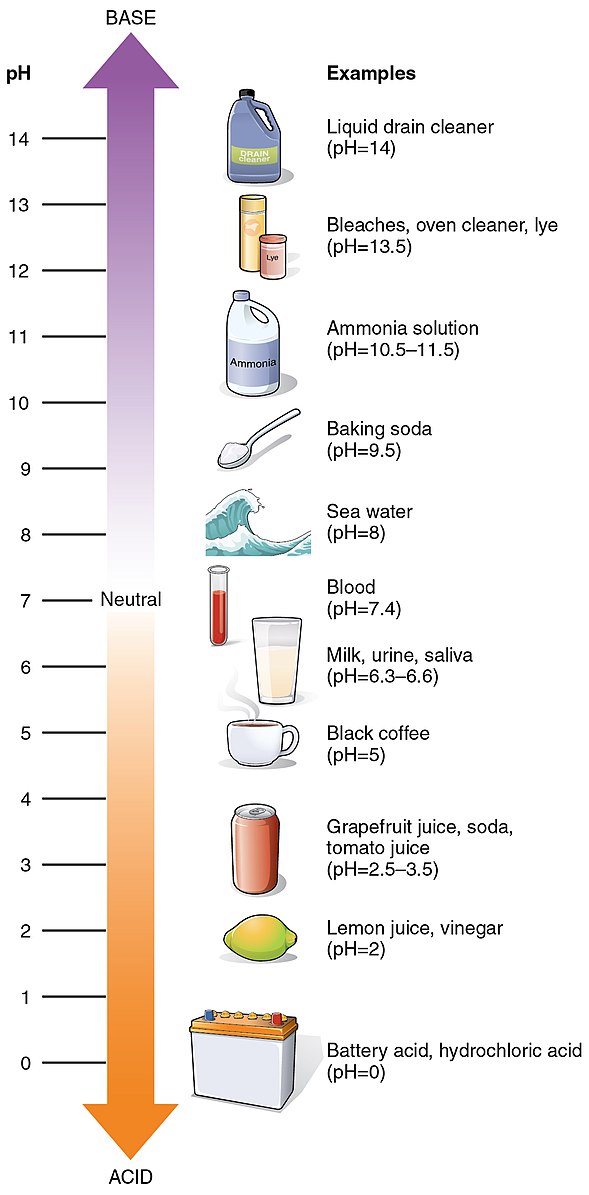The pH of acetate ion in water is typically around 9, making it slightly basic. Acetate ion is the conjugate base of acetic acid, which has a pKa of 4.76. When acetate ion is dissolved in water, it can react with water to form acetic acid and hydroxide ions, increasing the pH of the solution.
Understanding Acetate Ion in Water
Acetate ion (CH3COO-) is a negatively charged ion that is the conjugate base of acetic acid (CH3COOH). When acetate ion is dissolved in water, it can undergo a reaction with water to form acetic acid and hydroxide ions, as shown in the following equation:
CH3COO- + H2O ⇌ CH3COOH + OH-
This reaction shifts the pH of the solution towards the basic side, typically resulting in a pH around 9.
Factors Affecting the pH of Acetate Ion in Water
 Image source: OpenStax College
Image source: OpenStax College
The pH of a solution of acetate ion in water can be influenced by several factors:
-
Concentration of Acetate Ion: The higher the concentration of acetate ion, the more it will react with water to produce hydroxide ions, leading to a higher pH.
-
Temperature: The equilibrium of the reaction between acetate ion and water is temperature-dependent. Higher temperatures can shift the equilibrium towards the production of more hydroxide ions, increasing the pH.
-
Presence of Other Substances: The addition of other acids or bases can affect the pH of the acetate ion solution. For example, adding a weak acid like acetic acid will react with the hydroxide ions, lowering the pH. Conversely, adding a strong base like sodium hydroxide will increase the pH.
Adjusting the pH of Acetate Ion in Water
To adjust the pH of a solution of acetate ion in water, you can use the following methods:
-
Adding a Weak Acid: Adding a weak acid, such as acetic acid, will react with the hydroxide ions produced by the acetate ion, lowering the pH of the solution.
-
Adding a Strong Acid: Adding a strong acid, such as hydrochloric acid (HCl), will react with both the hydroxide ions and the acetate ions, effectively lowering the pH of the solution.
-
Dilution: Diluting the solution with water will decrease the concentration of acetate ion, reducing the amount of hydroxide ions produced and lowering the pH.
Contaminants and Their Effects
Contaminants or chemicals that can affect the pH of a solution of acetate ion in water include:
-
Other Acids: The addition of other acids, such as hydrochloric acid or sulfuric acid, will react with the acetate ion and hydroxide ions, lowering the pH of the solution.
-
Other Bases: The addition of other bases, such as sodium hydroxide or potassium hydroxide, will further increase the pH of the solution by providing more hydroxide ions.
To deal with these contaminants, you can adjust the pH of the solution by adding more acetate ion, a weak acid, or a strong acid, as needed.
Conclusion
In summary, the pH of acetate ion in water is typically around 9, making it slightly basic. This is due to the reaction of acetate ion with water to form acetic acid and hydroxide ions. The pH of the solution can be influenced by factors such as the concentration of acetate ion, temperature, and the presence of other substances. To adjust the pH, you can add a weak acid, a strong acid, or dilute the solution. Contaminants like other acids or bases can also affect the pH, and can be addressed by further adjusting the pH as needed.
References:
- https://chem.washington.edu/lecture-demos/ph-salts-water
- https://www.youtube.com/watch?v=d6KMefyDCHo
- https://www.chem.purdue.edu/gchelp/howtosolveit/Equilibrium/Salt_Solutions.htm
- https://cider.uoregon.edu/group/buffer-solution-demonstration-acetic-acidacetate-vs-water-compare-ph
- https://socratic.org/questions/what-is-the-ph-of-a-0-150-m-solution-of-sodium-acetate-nao2cch3-ka-ch3co2h-1-8-x
